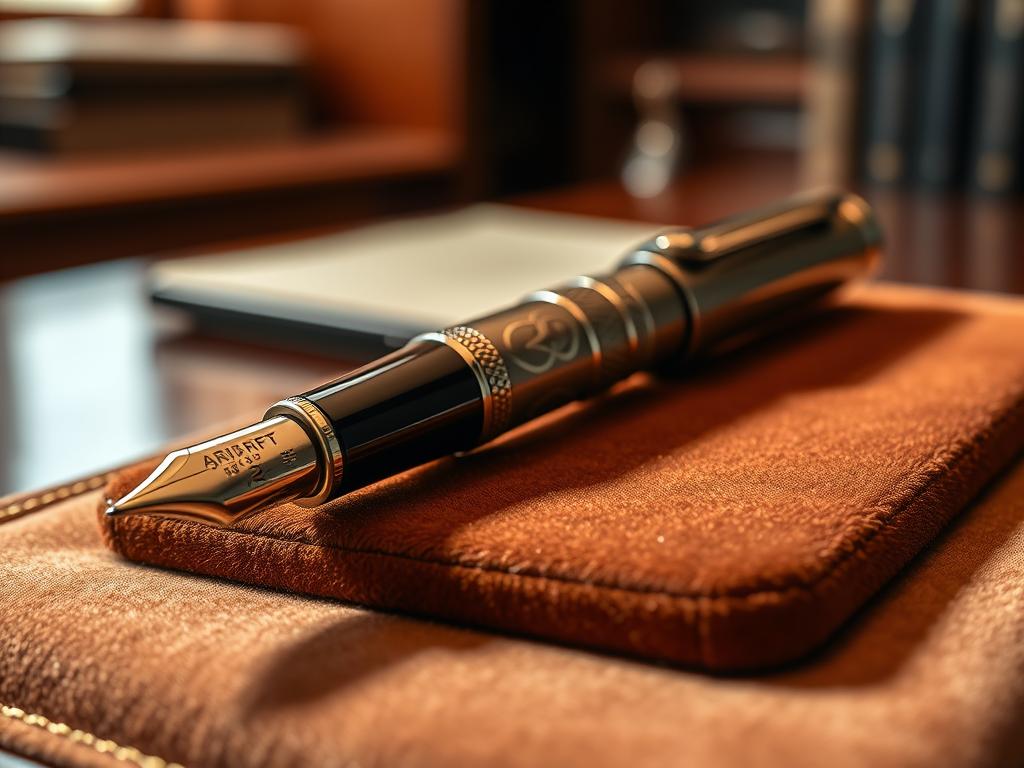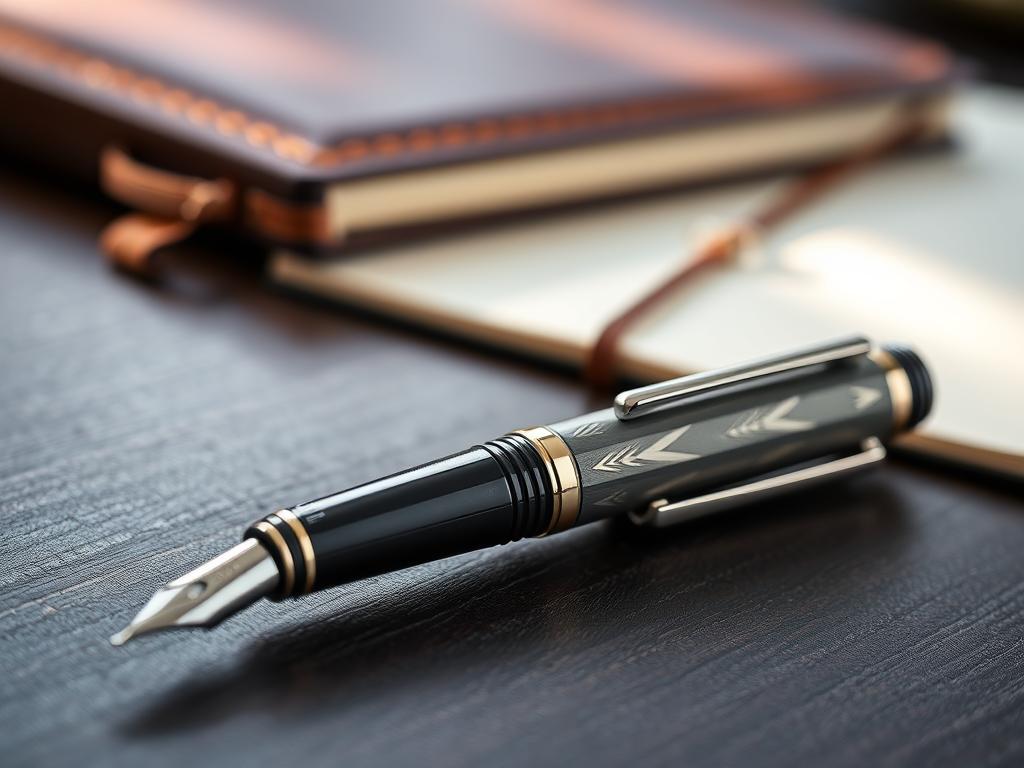From ancient quills to modern masterpieces, writing tools have evolved into symbols of artistry and personal expression. While disposable ballpoints get the job done, they often leave users frustrated with smudged ink or awkward grips. This contrast highlights why discerning writers increasingly seek instruments that blend precision engineering with emotional resonance.
The shift toward premium writing gear reflects a deeper appreciation for tactile experiences. Craftsmanship matters – whether it’s the weight of a titanium barrel or the smooth glide of an 18k gold nib. Brands like Montblanc and Namiki transform everyday items into heirlooms through meticulous attention to detail.
Three elements define exceptional writing tools: materials that endure, ergonomic designs that inspire, and performance that elevates every stroke. These features create more than just functional objects – they become extensions of personal style. A well-balanced instrument from Graf von Faber Castell or Aurora doesn’t just write words; it amplifies ideas.
Key Takeaways
- Premium materials like precious metals and artisan resins distinguish luxury pens
- Ergonomic design enhances comfort during extended writing sessions
- High-performance nibs deliver consistent ink flow for flawless execution
- Heritage brands combine traditional techniques with modern innovation
- Superior craftsmanship justifies higher price points through lasting value
Unparalleled Craftsmanship and Quality

Behind every stroke of excellence lies a story of meticulous creation. Unlike mass-produced alternatives, luxury pens emerge from workshops where artisans spend weeks perfecting single units. European factories like those of Montblanc employ generations-old techniques, blending hand-polished nibs with aerospace-grade titanium barrels.
Premium Materials and Design
Top-tier brands source materials most never see:
- Pelikan’s striped celluloid, cured for years to achieve signature depth
- Graf von Faber Castell’s rare African ebony grips, ethically harvested
- 18k gold nibs hand-tuned to 0.01mm precision
These elements transform a writing instrument into a tactile masterpiece. As one Pelikan craftsman notes:
“We don’t assemble pens—we birth heirlooms.”
Artistry and Engineering Standards
Swiss-made piston mechanisms and Japanese urushi lacquer techniques coexist in modern limited edition pens. Montblanc’s StarWalker collection exemplifies this fusion—meteorite fragments meet rhodium plating under microscope-level scrutiny.
This obsessive detailing ensures decades of seamless performance. When you hold such a piece, you’re not just signing documents—you’re wielding three centuries of refined artistry.
Exploring What Makes a Pen Luxury
Elevated writing instruments transcend basic utility through thoughtful engineering and emotional resonance. Brands like Caran d’Ache and Namiki merge practicality with visually striking designs, creating tools that feel like extensions of the user’s hand.
Design, Functionality, and Experience
A pen’s balance determines comfort during marathon writing sessions. Caran d’Ache’s hexagonal barrels distribute weight evenly, while Namiki’s urushi lacquer grips mold naturally to fingers. These ergonomic choices pair with nibs polished to 0.1mm tolerance for consistent ink flow.
Consider the experience of using a fountain pen with a spring-loaded clip versus a standard ballpoint. One survey found 68% of users prioritize tactile feedback when selecting premium tools. As a Namiki designer explains:
“Our maki-e techniques aren’t just decoration—they create friction points that guide the hand.”
Longevity, Heritage, and Value
Limited editions like Montblanc’s Patron of Art series become instant collectibles, blending historical motifs with modern materials. These pieces often appreciate in value, turning everyday tools into functional investments.
Heritage brands leverage decades of expertise:
| Brand | Signature Feature | Edition Type |
|---|---|---|
| Caran d’Ache | Swiss-engineered mechanisms | Anniversary collections |
| Namiki | Hand-painted lacquer | Emperor series |
| Pelikan | Vintage-inspired stripes | Maki-e collaborations |
When money meets craftsmanship, the result isn’t just a writing tool—it’s a portable legacy. These instruments outlast trends through timeless designs and repair-friendly construction, proving true luxury lies in enduring quality.
Iconic Luxury Pen Brands: Timeless Collections and Heritage
The world’s most revered writing instruments carry legacies spanning generations. From Swiss ateliers to Japanese studios, these brands balance tradition with cutting-edge functionality, earning their place in history and modern-day collections alike.
![]()
European Masterpieces
Montblanc’s snowcap emblem symbolizes precision honed since 1906, while Graf von Faber Castell crafts walnut wood barrels using 260-year-old techniques. S.T. Dupont redefines elegance with lacquered finishes tested against 60 quality checks. Pelikan’s striped celluloid, aged for seven years, remains a hallmark of their value-driven designs.
Artistic Innovations
Caran d’Ache Fountain Pens merge Swiss engineering with hexagonal barrels that work seamlessly for left-handed users. Namiki’s maki-e artists spend 300 hours applying gold leaf to urushi lacquer, creating pieces collectors call “wearable poetry.” Nakaya’s bespoke service lets clients choose everything from nib flexibility to matte finishes.
“My Namiki Emperor isn’t just a pen—it’s a conversation with centuries of craftsmanship.”
Classic Innovators
Parker’s 1941 “51” model revolutionized ink delivery, while Waterman’s Flex nibs remain a top consideration for calligraphers. Lamy’s Bauhaus-inspired Safari proves affordability can coexist with German engineering. Aurora’s hand-tuned nibs and Montegrappa’s literary-themed editions demonstrate why these brands dominate wish lists.
| Brand | Signature Innovation | Collector Appeal |
|---|---|---|
| Cross | Tungsten carbide nibs | Limited presidential sets |
| Tibaldi | Transparent celluloid | Renaissance-inspired art |
| Pilots | Vanishing point mechanism | Maki-e collaborations |
Conclusion
Choosing a writing instrument becomes an act of legacy when quality meets heritage. Brands like Montblanc and Namiki prove that time-tested craftsmanship transforms everyday tools into lifelong companions. Their creations blend gold nibs with platinum accents, merging artistry with precision engineering.
Three factors define these heirlooms: materials that endure, designs that inspire appreciation, and brands that honor history. Unlike disposable alternatives, they offer longevity through refillable mechanisms and repair services. A Pilot Custom Urushi or Pelikan Souverän isn’t just a purchase—it’s a sustainable choice reducing waste.
For customers seeking more than function, these instruments tell stories. They carry traditions from Japanese maki-e artists to Swiss watchmakers. Every stroke connects users to centuries of innovation.
Ready to elevate your writing? Explore collections from the brands mentioned. Discover how gold-plated details and platinum finishes create timeless value—one thoughtful purchase at a time.
FAQ
How do materials influence the perception of a luxury writing instrument?
High-end brands like Montblanc or Graf von Faber-Castell use rare materials such as precious resins, sterling silver, or 18K gold nibs. These elements enhance durability, tactile comfort, and visual appeal, distinguishing luxury pens from ordinary ones.
Why do limited edition pens command such high prices?
Limited editions from brands like S.T. Dupont or Nakaya often feature handcrafted artistry, exclusive designs, and numbered releases. Their scarcity, combined with intricate details like maki-e lacquer or engraved motifs, transforms them into collectible investments.
Can a luxury fountain pen improve the writing experience?
Absolutely. Brands like Pelikan or Pilot optimize nib engineering for smooth ink flow and ergonomic balance. Premium nibs, often made of gold or platinum, adapt to the user’s hand over time, creating a personalized feel unmatched by mass-produced options.
How does heritage contribute to a pen’s value?
Companies like Parker or Waterman have centuries-old legacies rooted in innovation and craftsmanship. Their historical significance, paired with timeless designs, adds emotional and monetary value, making them heirloom pieces.
Are luxury pens practical for everyday use?
While brands like Lamy or Cross offer sleek, functional designs, high-end models from Aurora or Tibaldi prioritize durability and refinement. Regular maintenance, like cleaning the nib or using quality ink, ensures they perform reliably for decades.
What role does customization play in luxury pen brands?
Brands such as Namiki or Montegrappa offer bespoke services, including monogramming, nib adjustments, or material choices. This personalization elevates the ownership experience, turning each piece into a unique reflection of its owner.
How do limited production runs affect a pen’s collectibility?
Scarce releases from Caran d’Ache or Tibaldi often appreciate in value due to their artistic merit and rarity. Collectors seek these pieces not just for functionality but as appreciating assets tied to cultural or historical themes.
What maintenance ensures a luxury pen’s longevity?
Regular cleaning with pH-neutral solutions, storing in temperature-controlled cases, and using high-quality inks prevent corrosion or clogging. Brands like Pelikan or Pilot provide detailed care guidelines to preserve performance and aesthetics.
Are there entry-level options for those new to luxury pens?
Yes. Brands like Lamy or Kaweco offer affordable luxury with stainless steel nibs and minimalist designs. These models introduce users to premium craftsmanship without the steep investment of gold-nibbed or limited-edition pieces.


